18.04.2024
China prepares to launch Shenzhou-18 crewed spaceship
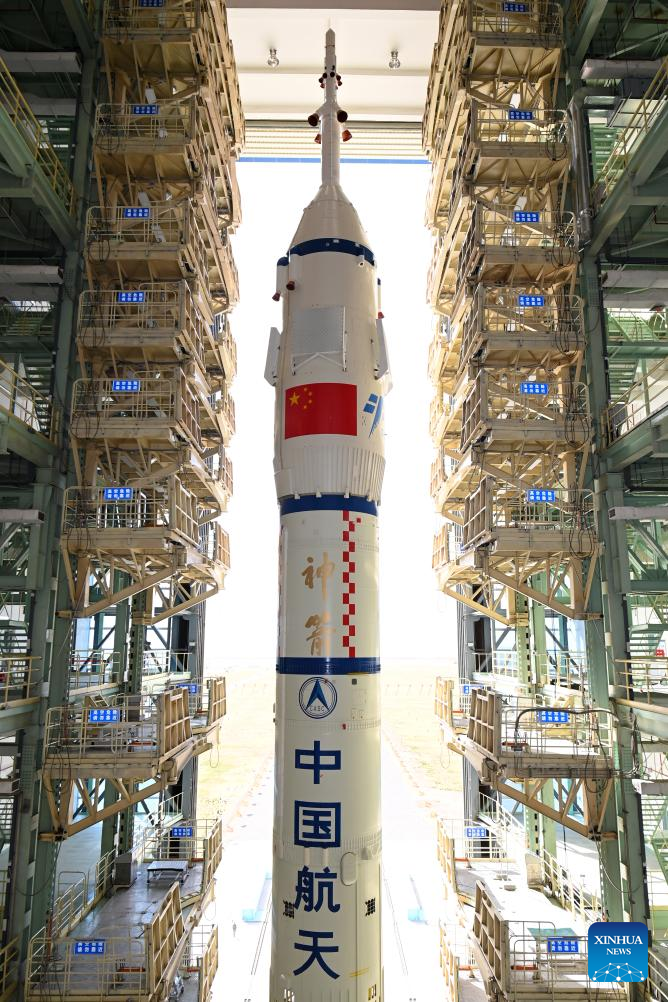
This photo taken on April 17, 2024 shows the combination of the Shenzhou-18 crewed spaceship and a Long March-2F carrier rocket being transferred to the launching area of the Jiuquan Satellite Launch Center in northwest China. The combination of the Shenzhou-18 crewed spaceship and a Long March-2F carrier rocket has been transferred to the launching area, the China Manned Space Agency (CMSA) said on Wednesday.According to the CMSA, the facilities and equipment at the launch site in Jiuquan Satellite Launch Center in northwest China are in good condition, and various pre-launch function checks and joint tests will be carried out as planned.The spaceship will be launched at an appropriate time in the near future, said the CMSA. (Photo by Wang Jiangbo/Xinhua)
The combination of the Shenzhou-18 crewed spaceship and a Long March-2F carrier rocket has been transferred to the launching area, the China Manned Space Agency (CMSA) said on Wednesday.
According to the CMSA, the facilities and equipment at the launch site in Jiuquan Satellite Launch Center in northwest China are in good condition, and various pre-launch function checks and joint tests will be carried out as planned.
The spaceship will be launched at an appropriate time in the near future, said the CMSA.
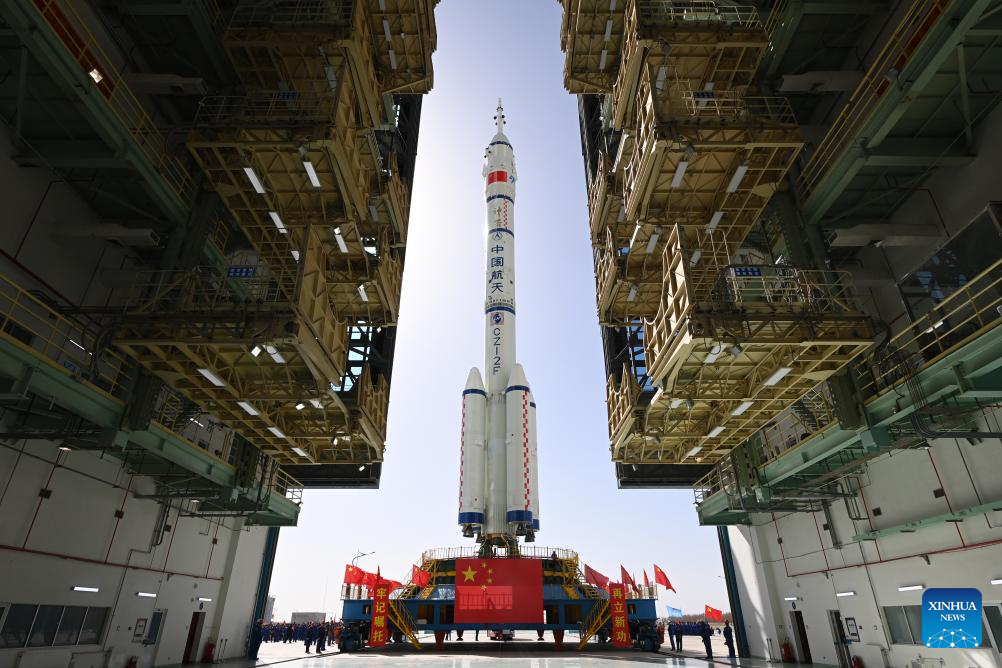
Quelle: Xinhua
----
Update: 24.04.2024
.
Shenzhou-18 crewed spaceship ready for launch
The Shenzhou-18 crewed space mission completed its last joint practice before launch and the system-wide airtightness check on Tuesday.
The rocket and spacecraft have completed the electrical performance test, and the astronauts and all systems at the launch site have carried out the launch drill, with everything reported to be in good condition.
April is typically the windiest and sandiest month at the Jiuquan Satellite Launch Center in northwest China. The meteorological staff at the launch site have analyzed April's wind speed data over the past 10 years and mapped out multiple contingency response plans.
The combination of the Shenzhou-18 crewed spaceship and a Long March-2F carrier rocket has been transferred to the launching area, the China Manned Space Agency (CMSA) said on April 17.
The spaceship will be launched in the coming days, the CMSA said.
Quelle: Xinhua
+++
China to send fresh crew to Tiangong space station
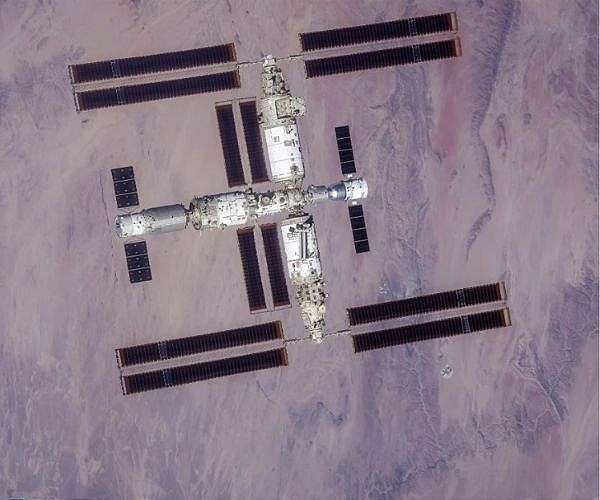
China will send a fresh crew to its Tiangong space station on Thursday, Beijing's Manned Space Agency announced, the latest mission in a programme that aims to send astronauts to the Moon by 2030.
The Shenzhou-18 mission -- crewed by three astronauts -- is scheduled to take off at 8:59 pm (1259 GMT) Thursday from the Jiuquan Satellite Launch Center in northwest China, Beijing announced Wednesday.
It will be led by Ye Guangfu, a fighter pilot and astronaut who was previously part of the Shenzhou-13 crew in 2021.
He will be joined by astronauts Li Cong and Li Guangsu, who are heading into space for the first time.
Commander Ye described the launch as a "new beginning".
"Facing the challenge, my two teammates and I are fully prepared. We are full of confidence in completing this mission!" he said at a press conference on Wednesday.
Li Guangsu said he wanted to take a "good look at the beautiful blue planet, the splendid mountains and rivers of the motherland, and find the places that have nurtured me along the way".
"I also want to see for my lovely child if the stars in the sky can really twinkle or not," he added.
The latest batch of Tiangong astronauts will stay in orbit for six months, carrying out experiments in gravity and physics, as well as in life sciences.
They will also carry out a "project on high-resolution global greenhouse gas detection", Deputy Director General of the CMSA Lin Xiqiang said, according to state news agency Xinhua.
"All pre-launch preparations are on schedule," he said.
"They will work with other active astronauts to carry out the follow-up space station missions and to realise the country's manned lunar landing."
The Tiangong, which means "heavenly palace", is the crown jewel of a space programme that has landed robotic rovers on Mars and the Moon, and made China the third country to independently put humans in orbit.
It is constantly crewed by rotating teams of three astronauts, with construction completed in 2022.
The Tiangong is expected to remain in low Earth orbit at between 400 and 450 kilometres (250 and 280 miles) above the planet for at least 10 years.
The new crew will replace the Shenzhou-17 team, who were sent to the station in October.
- Moon by 2030? -
Plans for China's "space dream" have been put into overdrive under President Xi Jinping.
The world's second-largest economy has pumped billions of dollars into its military-run space programme in an effort to catch up with the United States and Russia.
Beijing also aims to send a crewed mission to the Moon by 2030, and plans to build a base on the lunar surface.
China has been effectively excluded from the International Space Station since 2011, when the United States banned NASA from engaging with the country -- pushing Beijing to develop its own orbital outpost.
China's space agency said on Wednesday it had secured new international partners for its planned lunar base, known as the International Lunar Research Station, which Beijing has said will be completed by 2030.
The partners include Nicaragua, the Asia-Pacific Space Cooperation Organization and the Arab Union for Astronomy and Space Sciences, Xinhua said.
Yang Liwei, China's first man in space, told media on Wednesday that the country was "hoping and willing to cooperate with countries around the world on equal and mutually beneficial terms".
He said he was "personally looking forward" to greater cooperation in space with the United States.
"Because lots of the astronauts in the US are also our good friends, and we are all familiar with each other," he added.
US commander sees 'breathtaking' development of China's space power
Sydney (AFP) April 24, 2024 - China's military capabilities in space are developing at a "breathtaking" pace that only looks set to intensify after recent defence reforms, the head of the US Space Command said Wednesday.
General Stephen Whiting told journalists that Beijing had "tripled the number of intelligence surveillance and reconnaissance satellites on orbit" in just six years, with repercussions across military domains.
"Frankly, the People's Republic of China is moving at breathtaking speed in space and they are rapidly developing a range of counter-space weapons to hold at risk our space capabilities," Whiting said.
Describing China as the United States' top "pacing challenge", Whiting said Beijing had used "space capabilities to improve the lethality, the precision and the range of their terrestrial forces".
China's leaders had underscored future space ambitions with recent military reforms, he added.
Beijing on Friday announced the creation of an information support force within the People's Liberation Army, essentially reforming the way cyber, information, logistics and space operations are run.
The changes "further enhance the importance of space and information warfare and cyber operations" in China's military, Whiting said, offering an initial assessment of Chinese leader Xi Jinping's April 19 announcement.
The head of the US Space Command -- a unified combatant command that brings together all service branches including the Space Force -- urged "more transparency" from China, as it develops civilian and military space capabilities.
The world's second-largest economy has pumped billions of dollars into its military-run space programme in an effort to catch up with the United States and Russia.
China will on Thursday send a fresh crew to its Tiangong space station, part of an effort to send astronauts to the Moon and establish a research base on the lunar surface by 2030.
China has billed the International Lunar Research Station as a cooperative and scientifically focused project.
"We've seen the announcements of China's ambitions to go to the Moon and you know, those appear to be exploratory and scientific on the surface," said Whiting.
"But the Chinese aren't very transparent with what they do in space. And so, you know, we hope there's not a military component to that. But we would certainly welcome more transparency."
Quelle: SD
+++

Ye Guangfu (C), Li Cong (R) and Li Guangsu, the three Chinese astronauts for the upcoming Shenzhou-18 spaceflight mission, meet the press at the Jiuquan Satellite Launch Center in northwest China, April 24, 2024. (Photo by Wang Jiangbo/Xinhua)
Quelle: Xinhua
----
Update: 26.04.2024
.
Start von Shenzhou-18 crewed spaceship

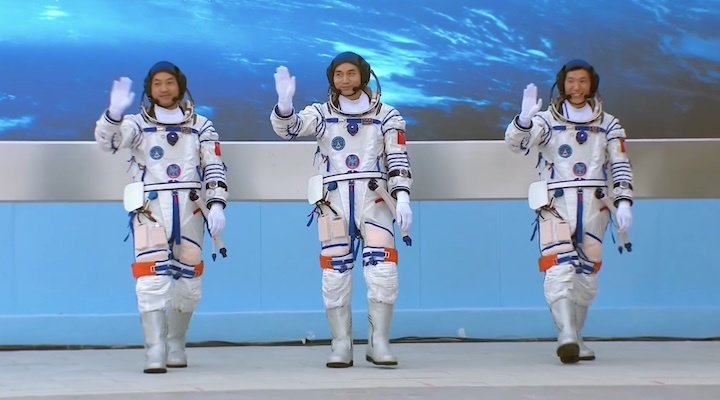
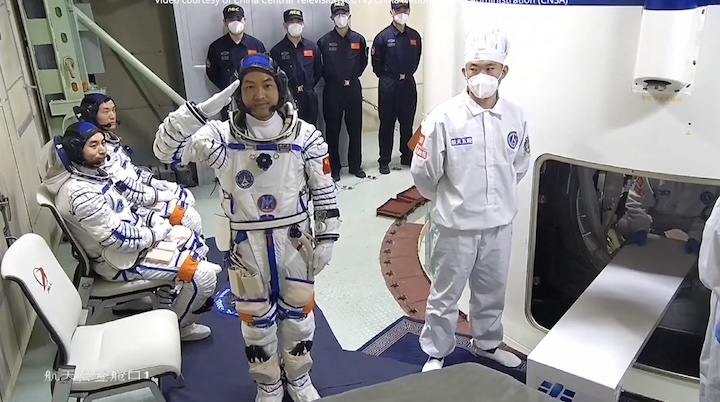
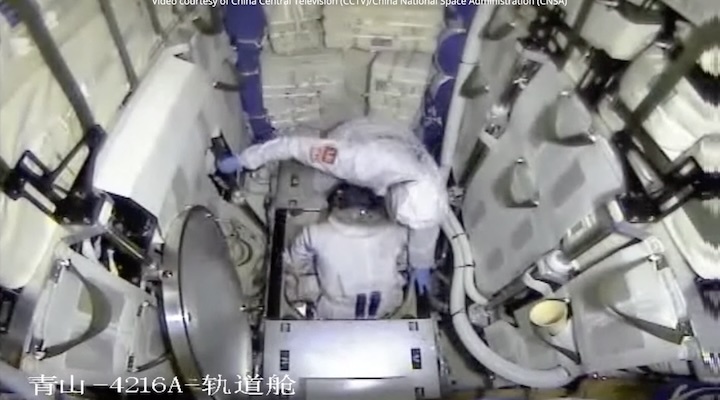

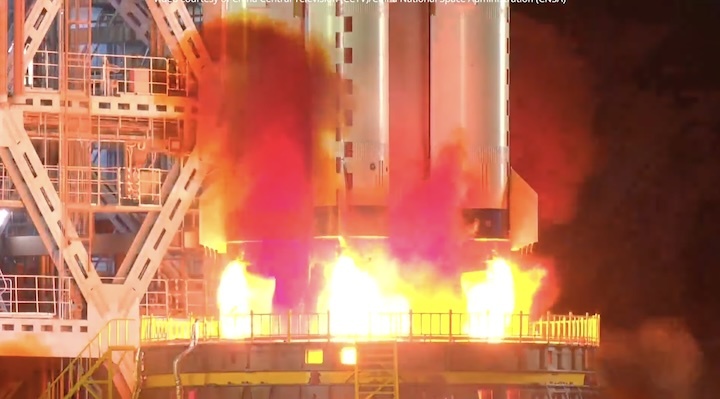
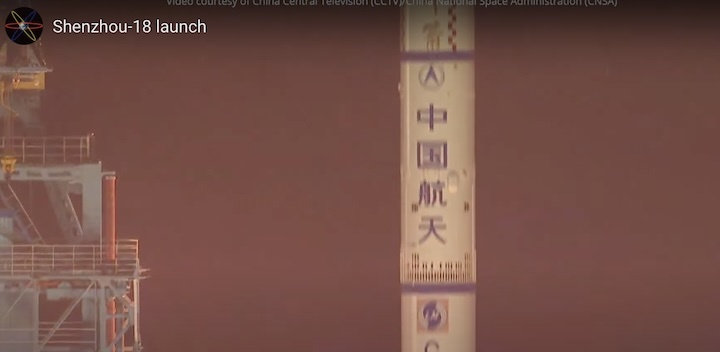
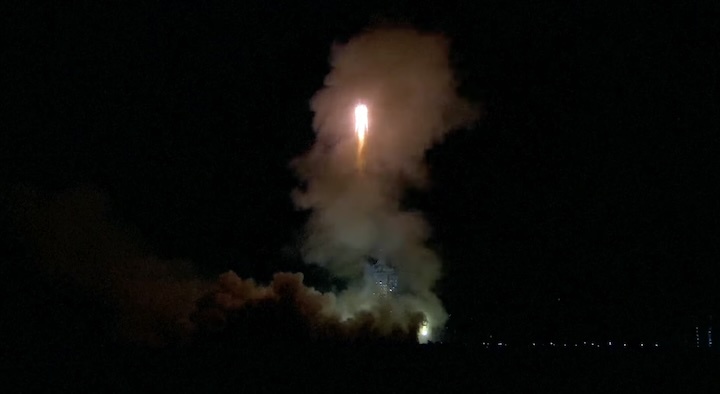
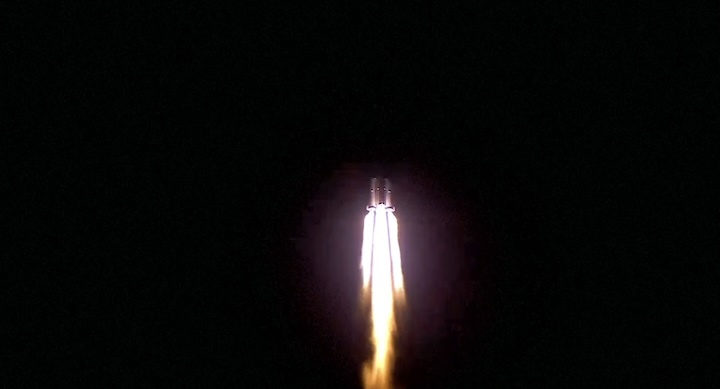
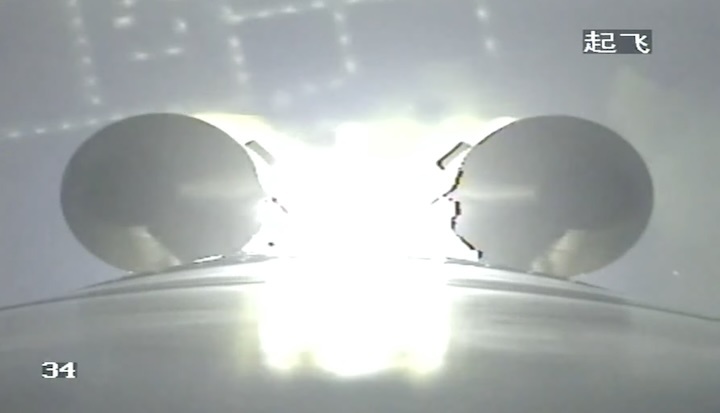

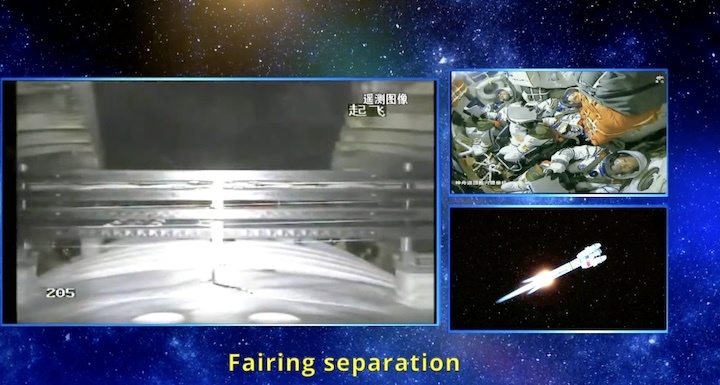
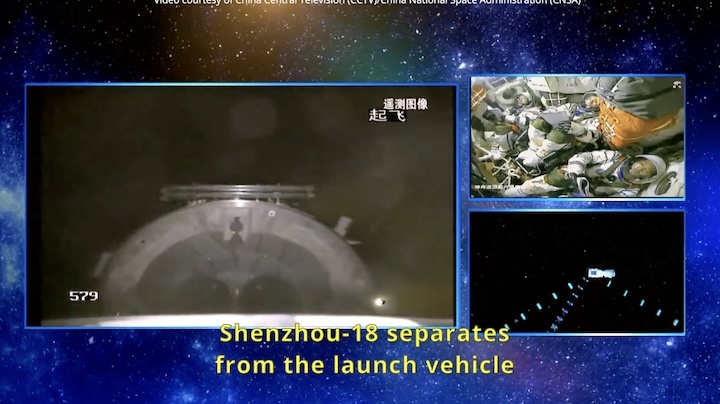

+++
China’s Shenzhou-18 crew arrive at Tiangong space station
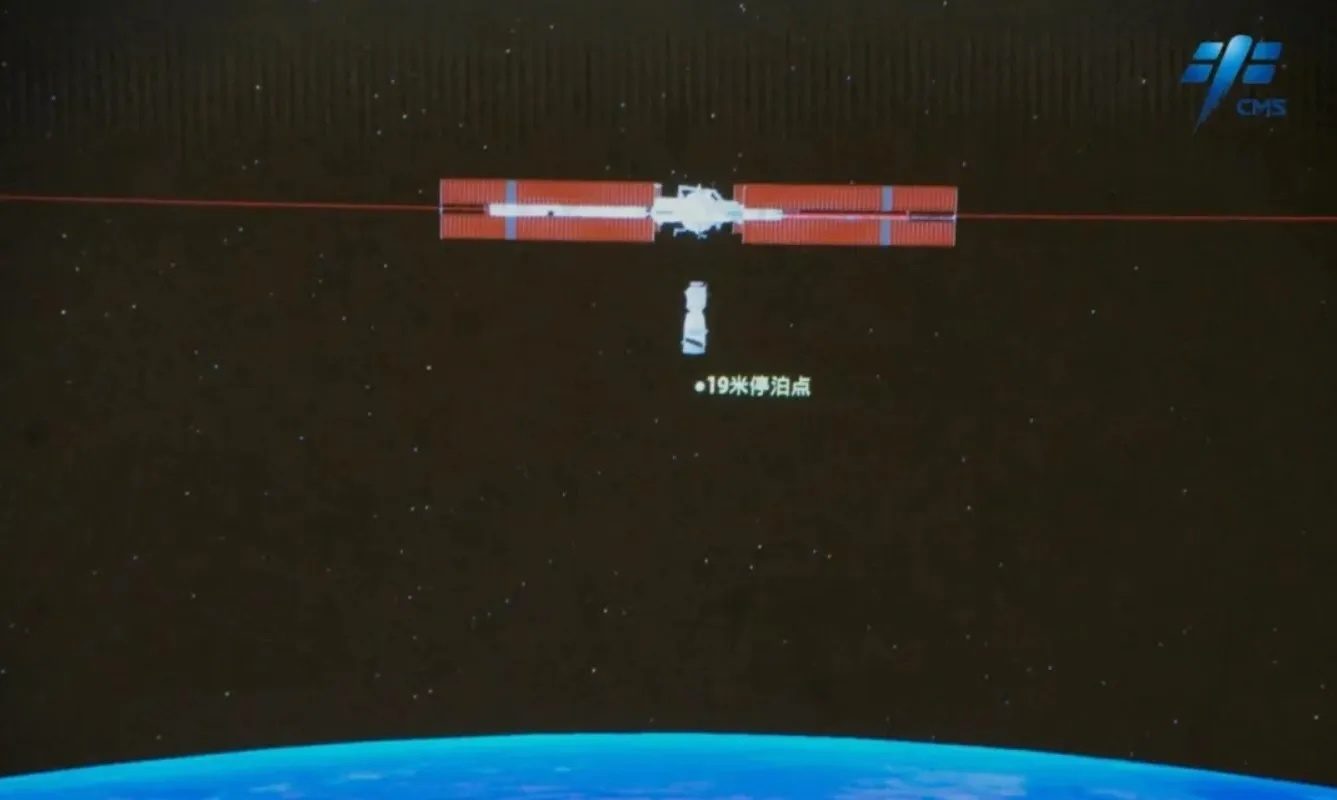
A mission control representation of the Shenzhou-18 spacecraft approaching Tiangong's radial docking port, April 25, 2024. Credit: CMSEO
HELSINKI — China’s latest crew of three astronauts arrived at the Tiangong space station Thursday following launch from Jiuquan spaceport in the Gobi Desert.
The Shenzhou-18 spacecraft completed rendezvous and docking with Tiangong’s radial docking port at 3:32 p.m. Eastern (1932 UTC), April 25, China’s human spaceflight agency announced shortly after the event.
The Shenzhou-18 astronauts—commander Ye Guangfu and rookies Li Cong and Li Guangsu—will soon be greeted aboard Tiangong by the Shenzhou-17 crew upon opening of the hatch.
The latter crew, consisting of Tang Hongbo, Tang Shengjie and Jiang Xinlin, have been operating Tiangong since late October 2023. The trio are set to return to Earth early April 30 after handing over control of the station to the incoming Shenzhou-18 astronauts.
Shenzhou-18 launched earlier Thursday. Long March 2F rocket topped with Shenzhou-18 lifted off from the Jiuquan Satellite Launch Center in the Gobi Desert at 8:59 a.m. Eastern (1259 UTC). The spacecraft separated from the upper stage around 10 minutes later.
Shenzhou-18 is China’s seventh crewed mission to Tiangong and the country’s 13th human spaceflight mission overall. The Shenzhou-18 mission will last roughly six months and be resupplied by the Tianzhou-8 spacecraft around August.
The crew will carry out more than 90 experiments, two to three extravehicular activities, and implement six cargo outbound deliveries via the station’s cargo airlock during their mission.
China approved its space station plan in 1992 and began building the three-module, T-shaped low Earth orbit outpost in 2021. Commander Ye was one of the first visitors to the under-construction space station on the 2021-2022 Shenzhou-13 mission.
International astronauts and tourists to visit Tiangong
An official with China’s human spaceflight agency reiterated ahead of launch that the country is looking to host international astronauts aboard Tiangong. It is also considering tourist visits.
“We will speed up the study on the feasibility of inviting international astronauts and tourists to the space station,” Lin Xiqiang, deputy director of the China Manned Space Engineering Office (CMSEO), told media at a pre-launch press conference at Jiuquan, April 24.
CMSEO officials have made similar statements previously but once again did not provide details nor timelines for such activities.
“In the near future, China’s space station will undoubtedly open the door to astronauts from various backgrounds,” Lin said.
China is preparing to expand Tiangong in the coming years. The first move will be sending a multi-functional expansion module with six docking ports to the orbital outpost. This expansion could allow for greater possibilities for international, tourist and commercial visits without disrupting core operations.
Lin also stated April 24 that the selection of the country’s fourth batch of astronauts is soon to be completed. These will engage in the space missions together with the active astronaut. They could be involved in China’s planned crewed moon landing mission, according to Lin.
Lin provided an update on progress of said lunar plans. China aims to put its astronauts on the moon before the end of the decade.
“The program development for major flight products, including the Long March 10 rocket, the Mengzhou crew spacecraft, the lunar lander Lanyue and the lunar landing suits, are all complete. Their prototype production and tests are in full swing,” Lin said.
Quelle: SN
